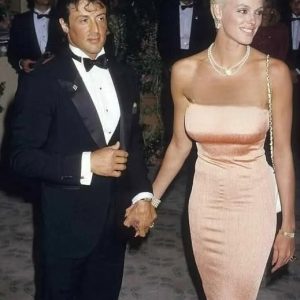The conflict between Tucker Carlson and the Federal Bureau of Investigation did not erupt in a vacuum. It unfolded in the long shadow of one of the most consequential security failures in recent American political history: the July 13, 2024, assassination attempt on President Donald Trump during a campaign rally in Butler, Pennsylvania. More than a year after the attack, the public’s hunger for answers has not dimmed. Into this vacuum stepped Carlson, whose confrontational broadcasting style and willingness to challenge institutional narratives have long made him a lightning rod. When he published a 35-minute video accusing the FBI of lying about the digital footprint of the shooter, 20-year-old Thomas Matthew Crooks, he did more than report new information — he rekindled a national debate about whether Americans can trust their most powerful federal institutions. Carlson’s claim that the FBI asserted Crooks had “no online footprint” became the centerpiece of his argument that the bureau withheld, distorted, or downplayed critical evidence. The FBI’s immediate rebuttal — delivered through its new Rapid Response account — insisted the accusation was categorically false. What followed was not merely a disagreement over facts, but a collision of narratives about truth, transparency, and political legitimacy in an era where public faith in institutions remains deeply fractured.
To understand the stakes of this clash, one must revisit the attack itself and the questions that have lingered ever since. During Trump’s 2024 rally, Crooks fired eight rounds from an AR-15-style rifle while perched on a rooftop within visible range of the stage. One audience member was killed, two others wounded, and Trump sustained a graze wound to his right ear — an injury that instantly became one of the most replayed images of the modern political era. Within seconds, a Secret Service counter-sniper returned fire, killing Crooks. What emerged in the aftermath was a portrait of a young man with no prior criminal record, limited political activity, and a still-murky motive. The Secret Service endured withering criticism for allowing a clear line-of-sight vulnerability to go unaddressed; its director, Kimberly Cheatle, resigned under intense bipartisan pressure. Congressional committees, independent security experts, and investigative journalists all searched for clarity about Crooks himself: who he was, what he believed, and whether he acted alone. Yet many of the most basic questions — what Crooks did online, whom he interacted with, and what digital traces he left behind — remained wrapped in ambiguity. It was this ambiguity that Carlson leveraged, claiming he had obtained videos, accounts, and digital evidence that directly contradicted the official narrative.
Carlson’s video released on X included several claims that electrified the online conversation. Among the clips was footage he said came from Crooks’s Google Drive, showing the shooter dry-firing a weapon at paper targets in what looked like a makeshift training space. Carlson claimed this and other files suggested a premeditation and ideological context the FBI was minimizing. He also said a source had used Crooks’s phone number to trace multiple email addresses and dozens of linked accounts: Gmail, Snapchat, Discord, Venmo, PayPal, Zelle, Chess.com, Quora, Google Play, and even an educational platform like Quizlet. These accounts, Carlson argued, constituted a “robust online presence” that could not be reconciled with what he described as the FBI’s assertion that Crooks left virtually no digital trail. Carlson framed the discrepancy as evidence that the FBI was hiding the shooter’s true motivations, or at least downplaying the breadth of his online engagement to avoid political fallout. When he said the FBI asked whether he had “verified” the accounts, Carlson publicly scoffed, calling the question “confusing” and insisting “the authenticity is self-evident.” The suggestion that the bureau was being evasive — that it was more concerned with controlling the narrative than telling the truth — became a central theme of Carlson’s critique.
The FBI’s rebuttal, however, was equally forceful and carefully worded. Its Rapid Response account said plainly: “This FBI has never said Thomas Crooks had no online footprint. Ever.” The phrasing was deliberate — highlighting both the denial itself and the fact that the bureau had undergone a leadership shift since 2024. The account, launched in November 2025, emphasized that the new directorate sought real-time corrections to misinformation, not the bureaucratic delays that had previously characterized FBI communication. Behind the scenes, the bureau pointed to the extraordinary scope of its investigation: more than 480 personnel assigned; over 1,000 interviews; analysis of 13 devices; review of nearly half a million digital files; tracking of 10 financial accounts; and examination of at least 25 online accounts linked — directly or indirectly — to Crooks. Officials emphasized that they never claimed Crooks had no online presence at all, only that his activity was limited, sporadic, and not tied to a coherent ideological movement. In 2024, then-Deputy Director Paul Abbate had publicly referenced an account believed to be Crooks’s that contained hundreds of comments — some potentially extremist — but stressed that attribution and context were still under review. To the FBI, Carlson’s claims were less a revelation than a mischaracterization: not evidence of a cover-up, but a misunderstanding — or intentional twisting — of what the bureau had actually stated.
Yet in the current political climate, the dispute quickly transcended facts. To some Americans, Carlson’s claims fit neatly into a broader narrative of institutional decay — an FBI that exaggerates, misleads, or hides politically inconvenient information. To others, the FBI’s counterclaims represented a necessary corrective, revealing Carlson’s willingness to sensationalize partial data for political gain. The controversy also raised deeper questions about the public’s ability to meaningfully evaluate digital evidence in a fragmented media environment. Even if Carlson’s collection of accounts was authentic, context matters: Were the accounts genuinely used by Crooks? Were they active? Did they reveal motivations or mental deterioration? Did they show political extremism or merely the online habits of a socially isolated young man? The FBI has insisted that Crooks shared no violent intentions with anyone online or offline before the attack, and that his digital activity did not amount to a coherent ideological pattern. Critics counter that the lack of ideological clarity fits an all-too-familiar institutional pattern: when a shooter does not align neatly with a political narrative, agencies default to vagueness. Carlson, seizing on this uncertainty, has positioned himself as the voice exposing what others would rather bury.
In the end, this clash reveals as much about America as it does about Thomas Crooks. The dispute sits at the intersection of institutional credibility, media influence, political polarization, and the complicated reality of digital life in the twenty-first century. Crooks’s attack shattered public confidence in federal protective agencies; the Secret Service’s failures were so glaring that an independent panel called for “fundamental reform.” More than a year later, the FBI’s investigation — no matter how exhaustive — exists within an environment where millions of Americans believe that transparency is optional for those in power. Into this landscape stepped Carlson, whose accusations — verified or not — resonate with a public already suspicious of official statements. The FBI, now attempting to rebuild trust under new leadership, finds itself forced to correct narratives in real time. Whether the bureau or Carlson has the fuller picture may ultimately matter less than the fact that Americans increasingly live in parallel realities, each shaped by different gatekeepers of information. In this sense, the battle over Crooks’s online footprint is about far more than one shooter’s digital history — it is a chapter in a larger struggle over who gets to define truth, whose narrative the public will believe, and what kind of evidence can still command national consensus.




